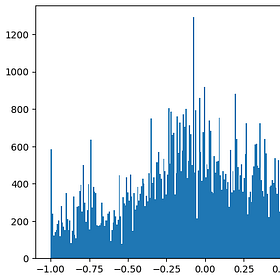An improved Market Making Strategy
To never quote fixed distance ever again.
The usual first model you use when doing MM is quoting a fixed distance around some sort of fair value.
This could be the midprice of a big exchange like Binance, an adjusted midprice based on some metrics like orderbook imbalance, etc.
Now there are some problems with quoting a fixed distance:
It doesn’t account for other orders:
If you quote 6bps out and there is a huge limit order at 5bps you may not get filled and it may be smarter to quote at 4bps.
It doesn’t account for volatility:
If markets are volatile then you are more likely to get filled further out in the book so why not increase your spread?
It doesn’t account for directionality of takers:
Are takers more likely to buy or sell? This will affect the rate at which we get filled on both sides.
We are gonna build a model that accounts for both of those in this article and then test it live!
For an introduction to Market Making you can check out this article:
Market Making - How to start
In the previous article we looked at TWAP and VWAP and learned why those 2 indicators are extremely important in financial markets. In this article we are gonna look at a couple of different market making models, run some simulations, learn about adverse selection, every market makers biggest fear and more!
If you end up enjoying this article consider getting the paid subscription, that way you can support me and I can write even more articles!
Here is a discount code for those interested: https://www.vertoxquant.com/62375e34
Table of Content
The Model
Building an Orderbook
Exchange Connection
Testing it Live
Final Remarks


